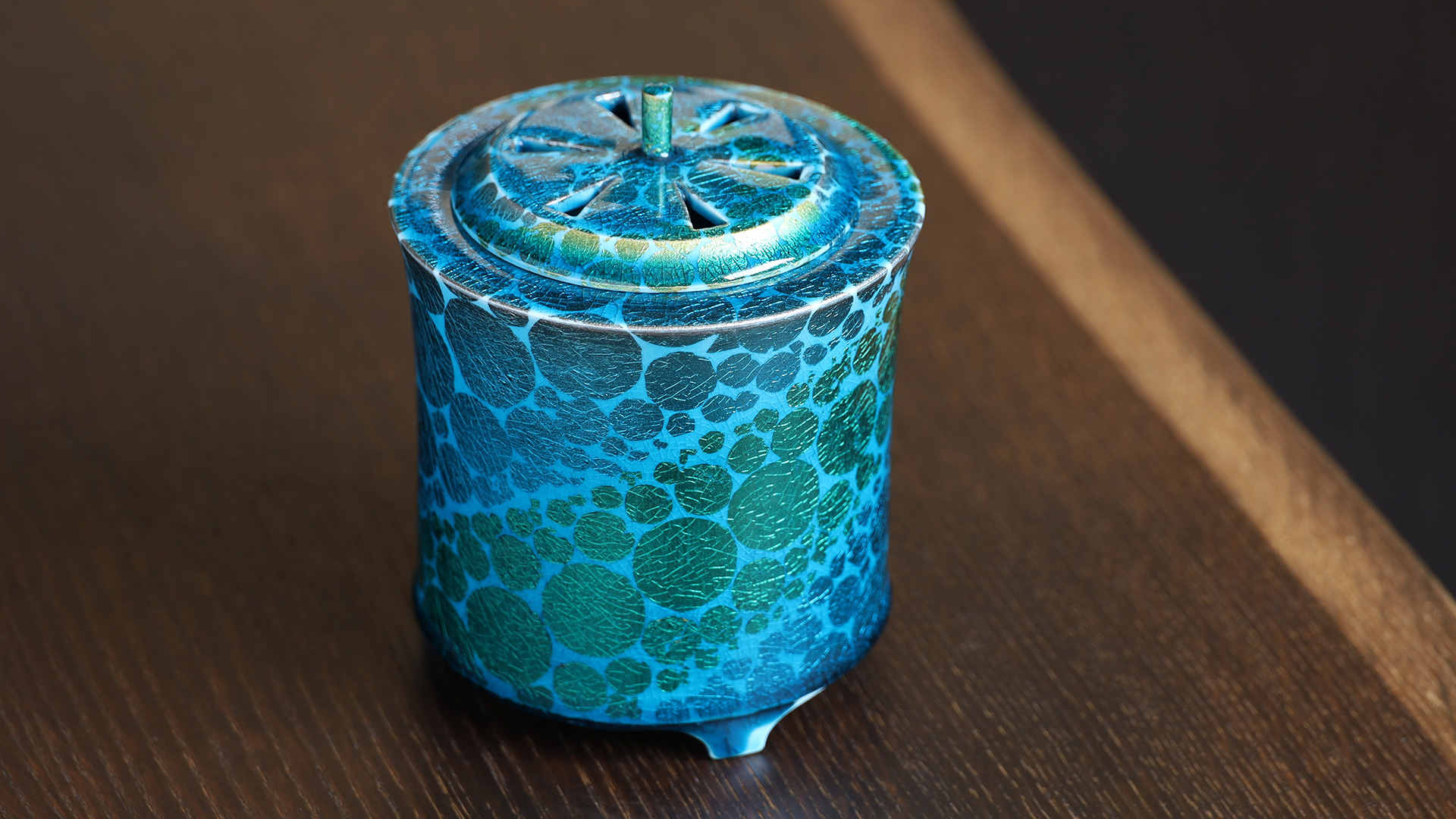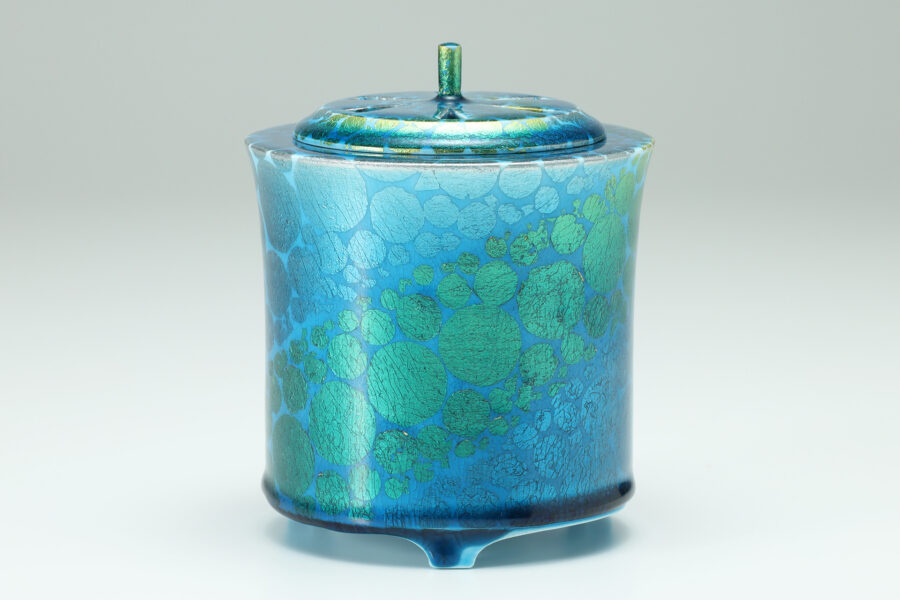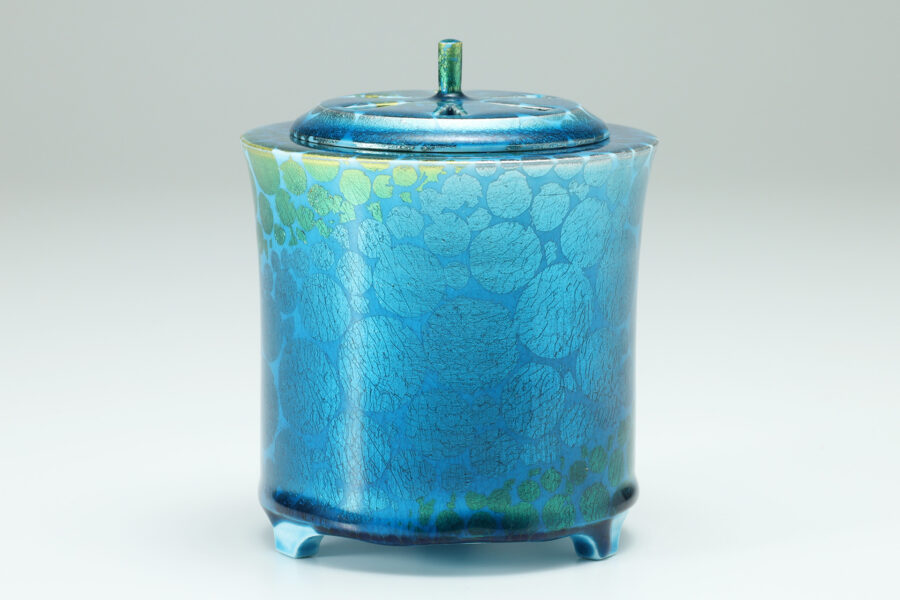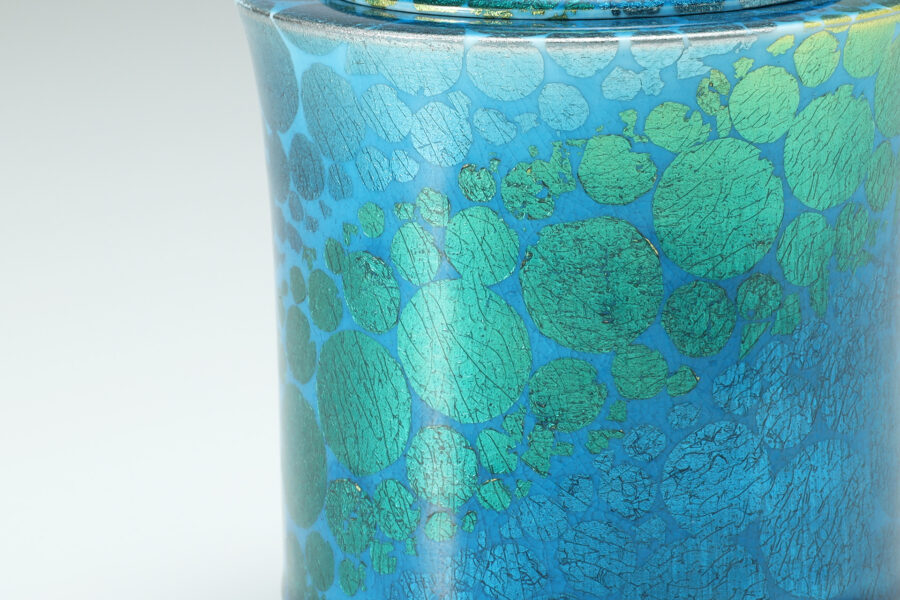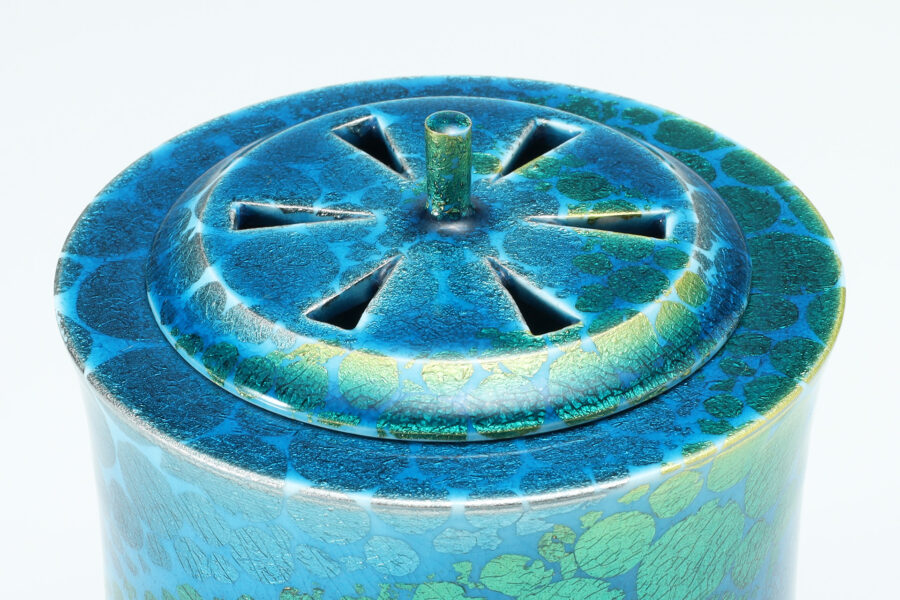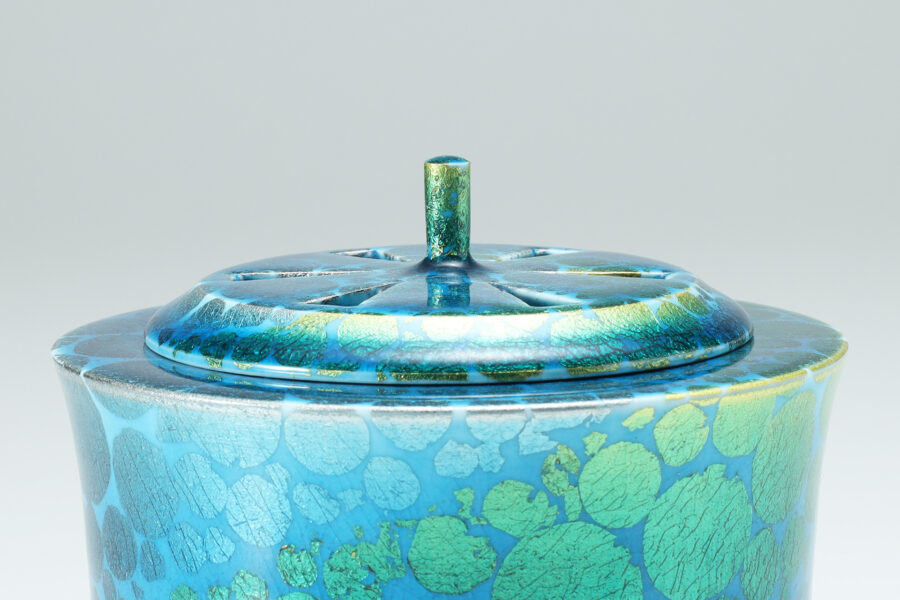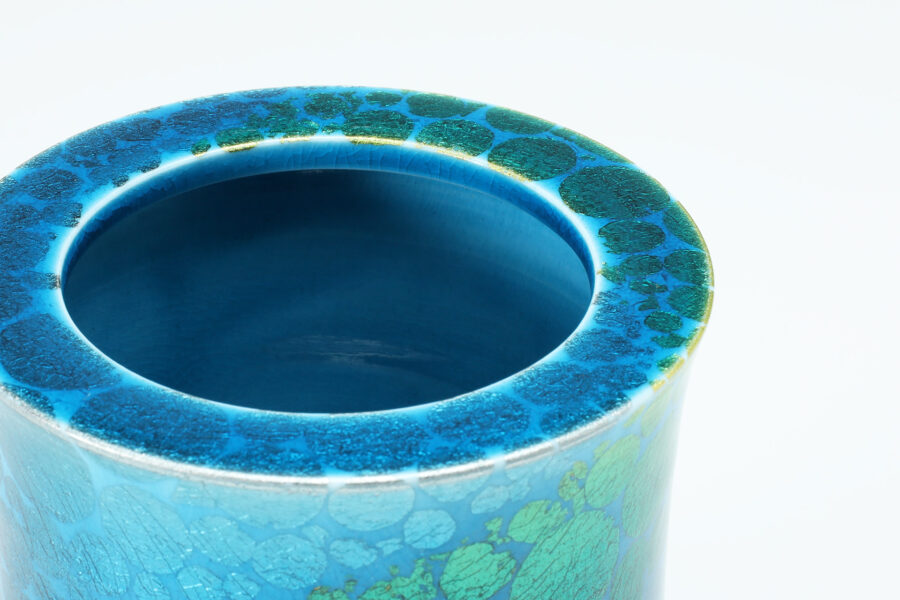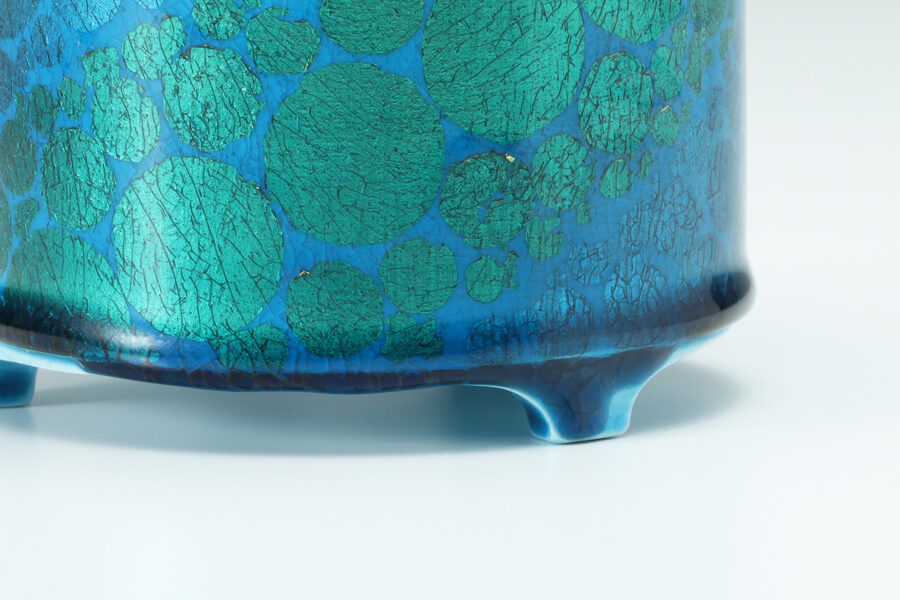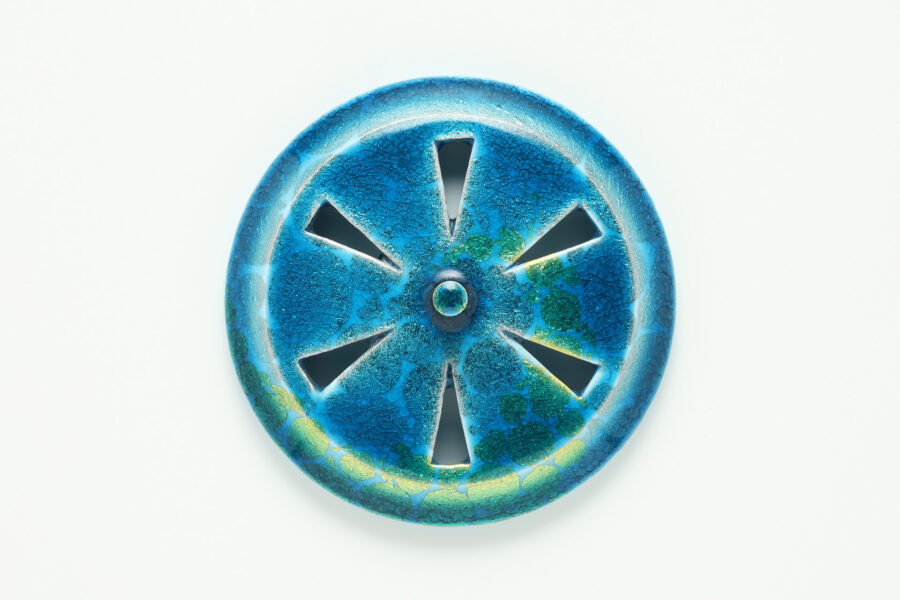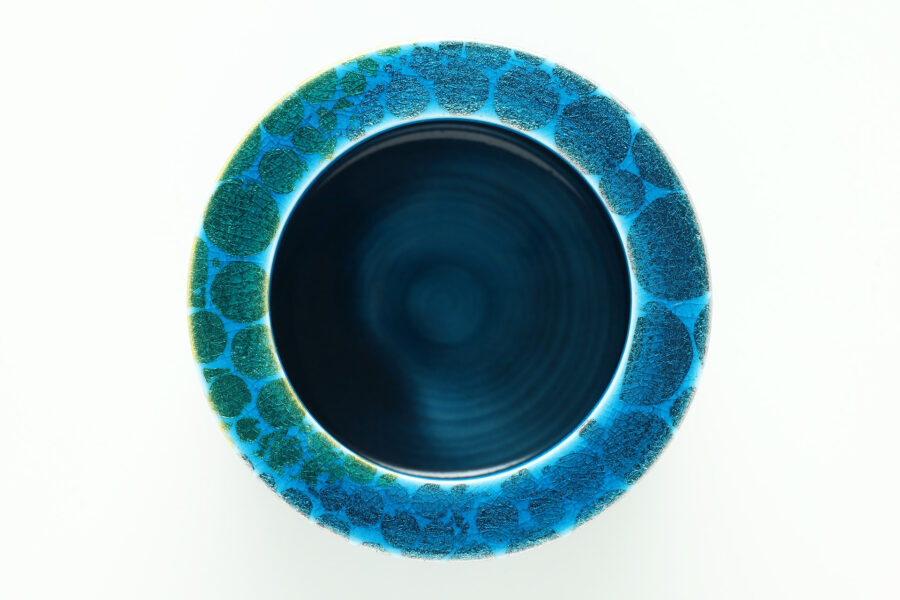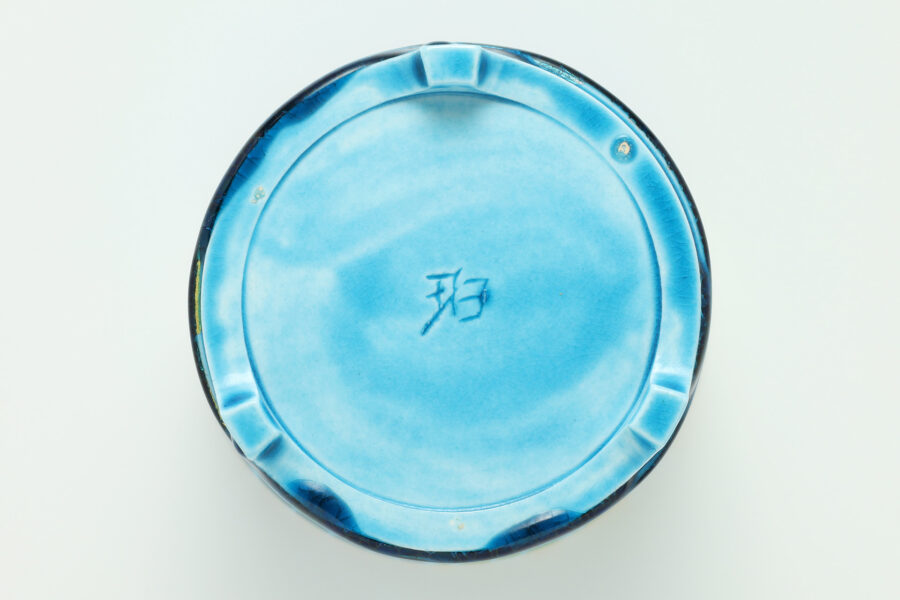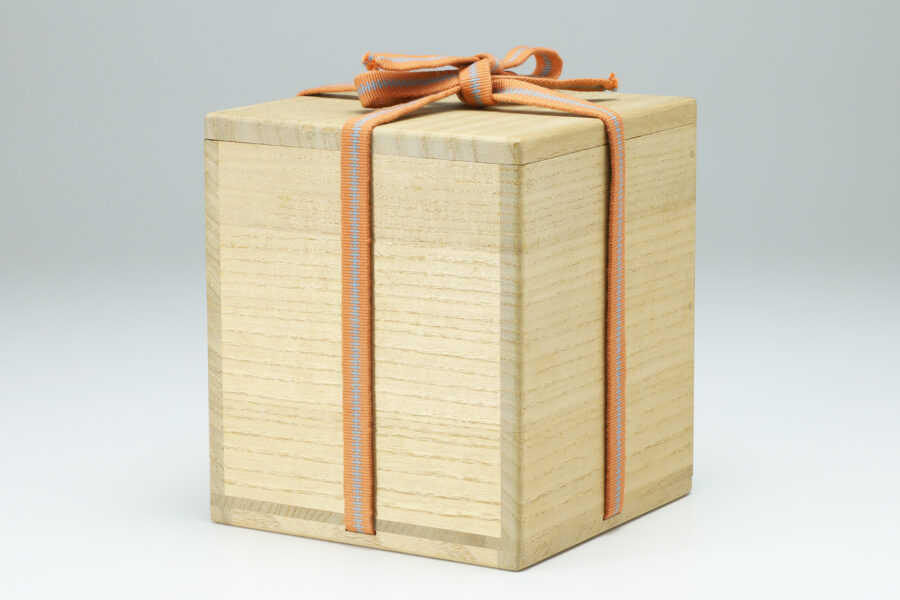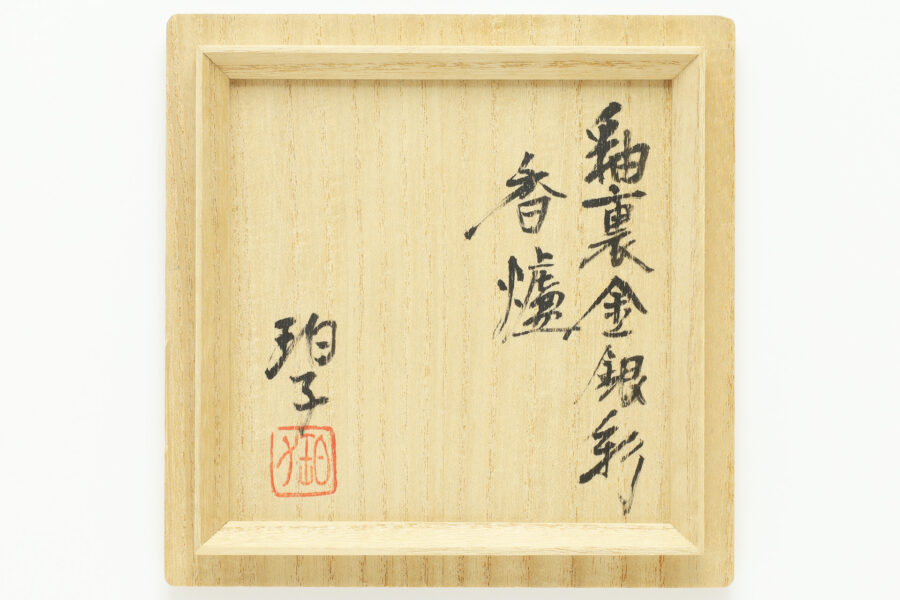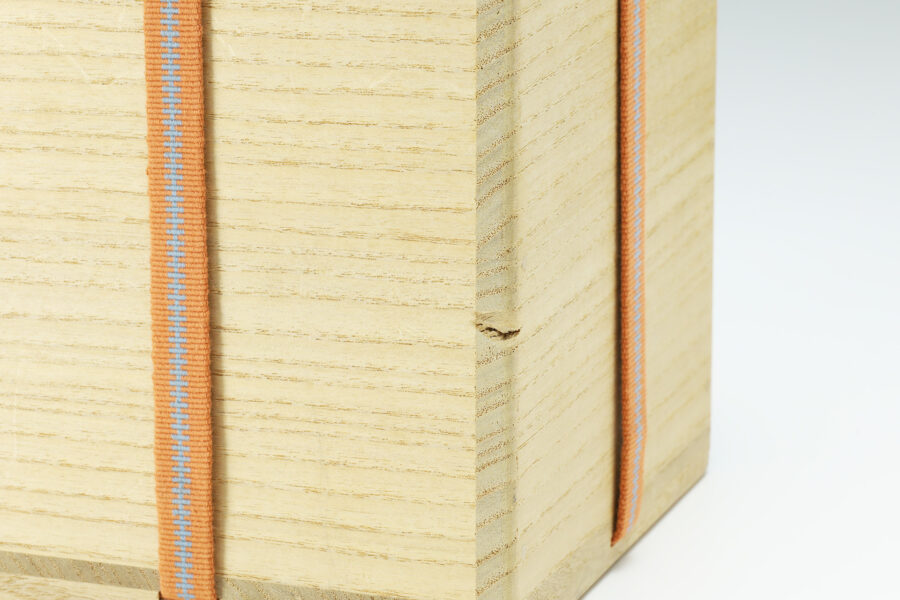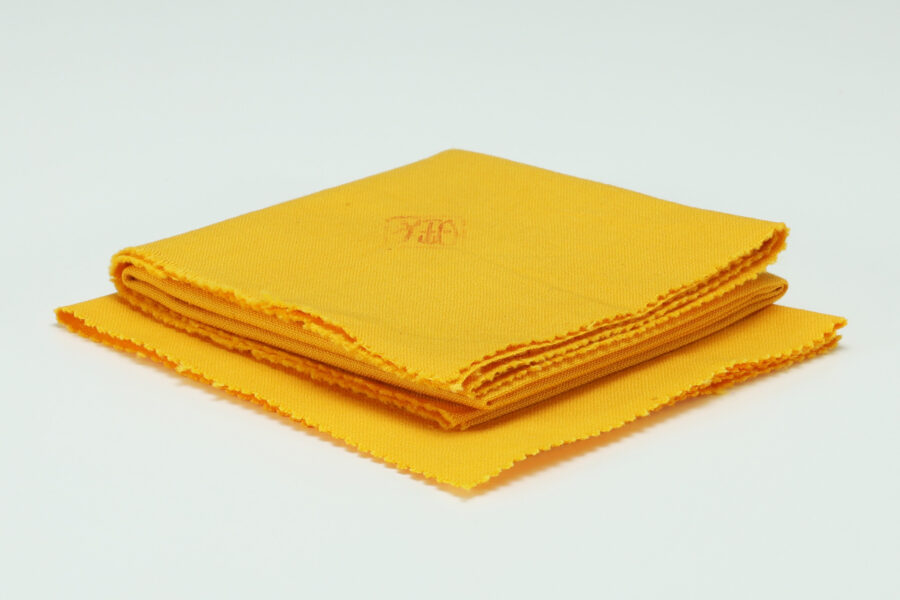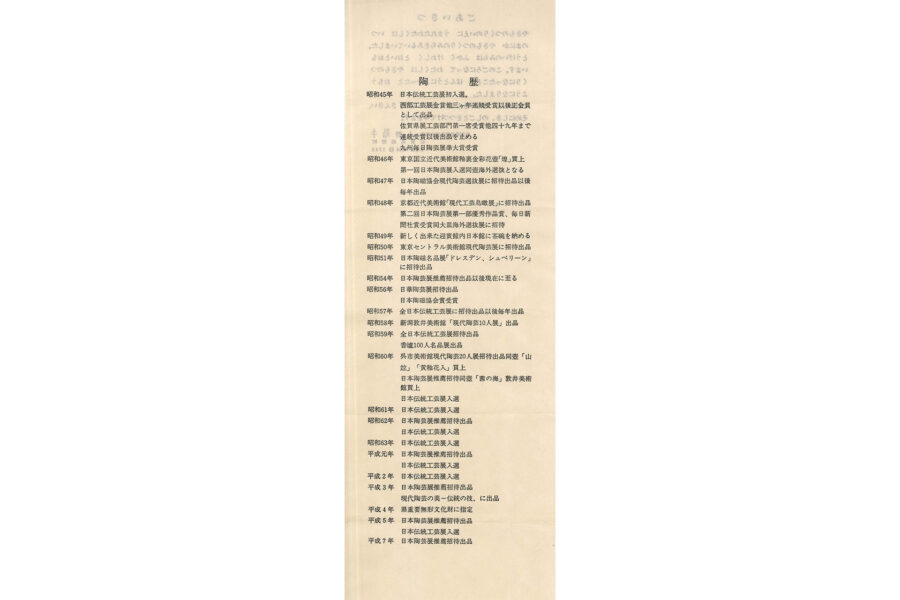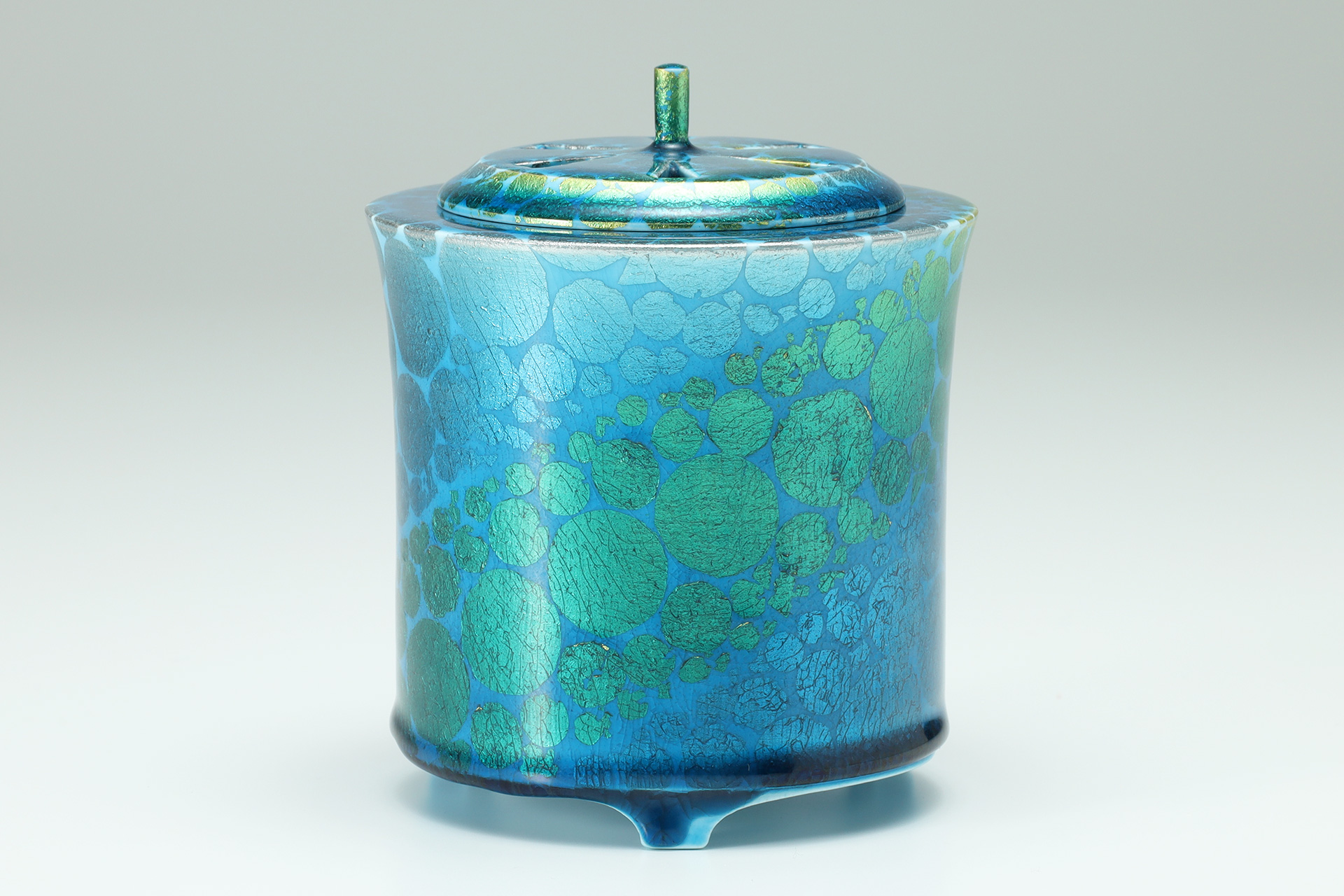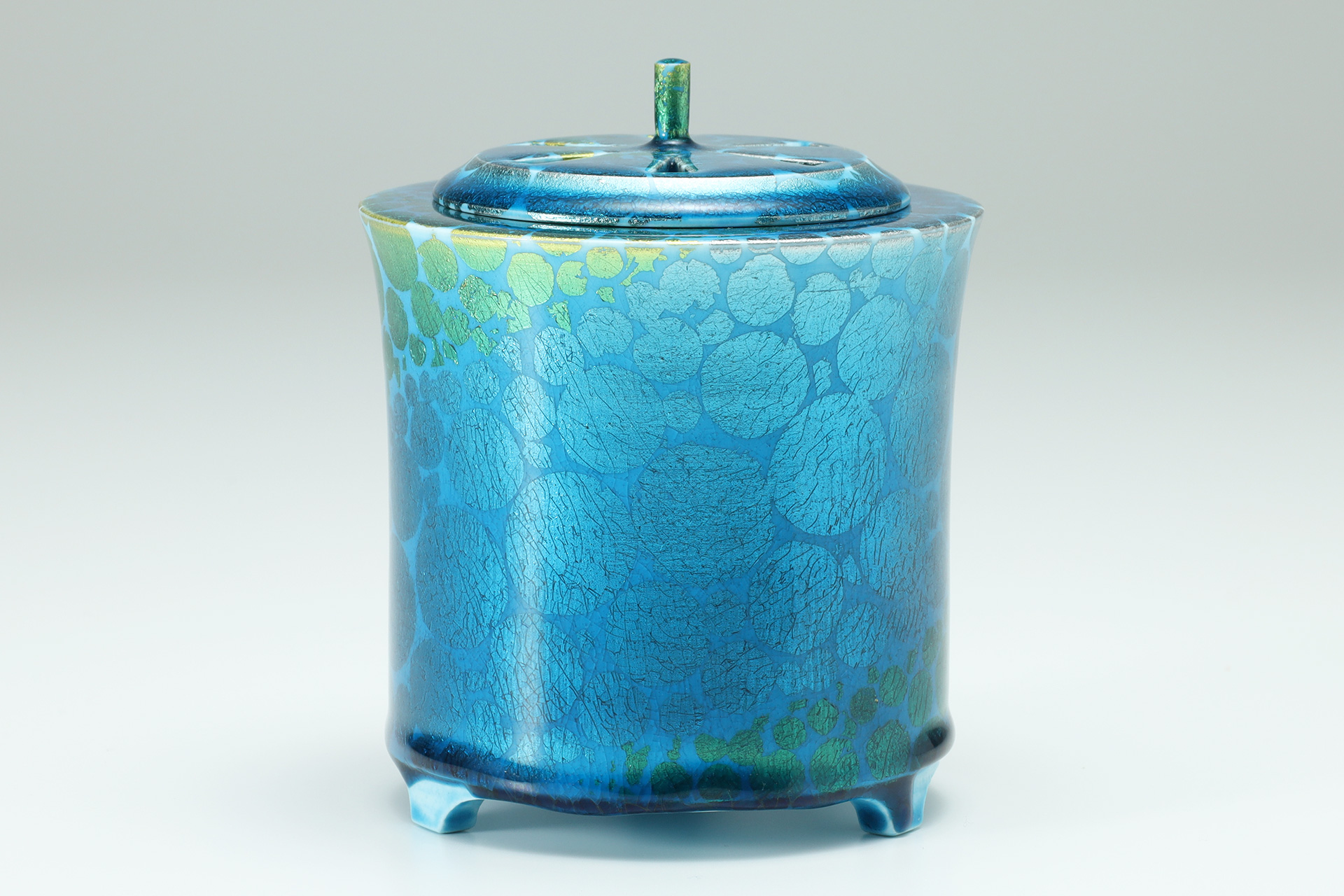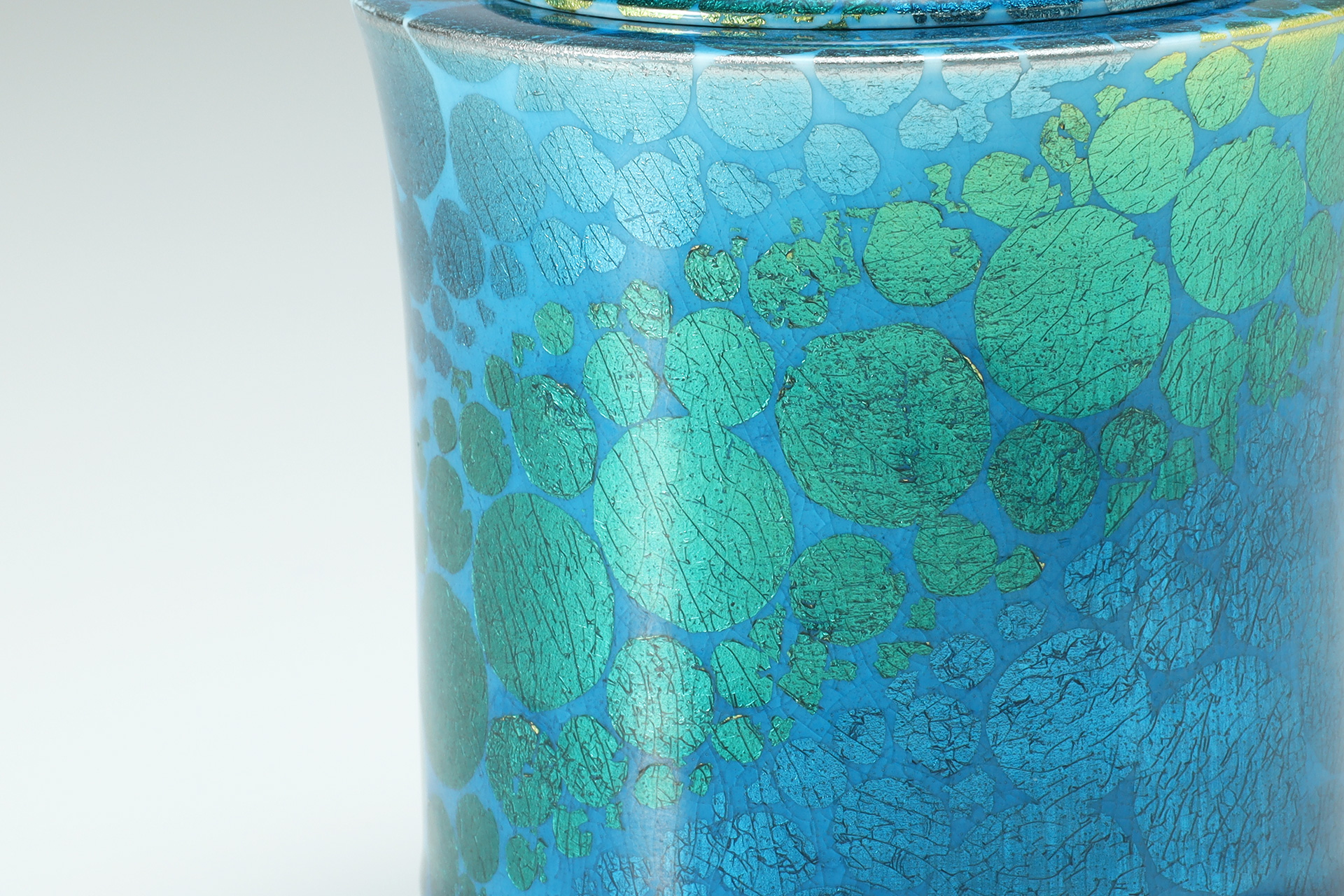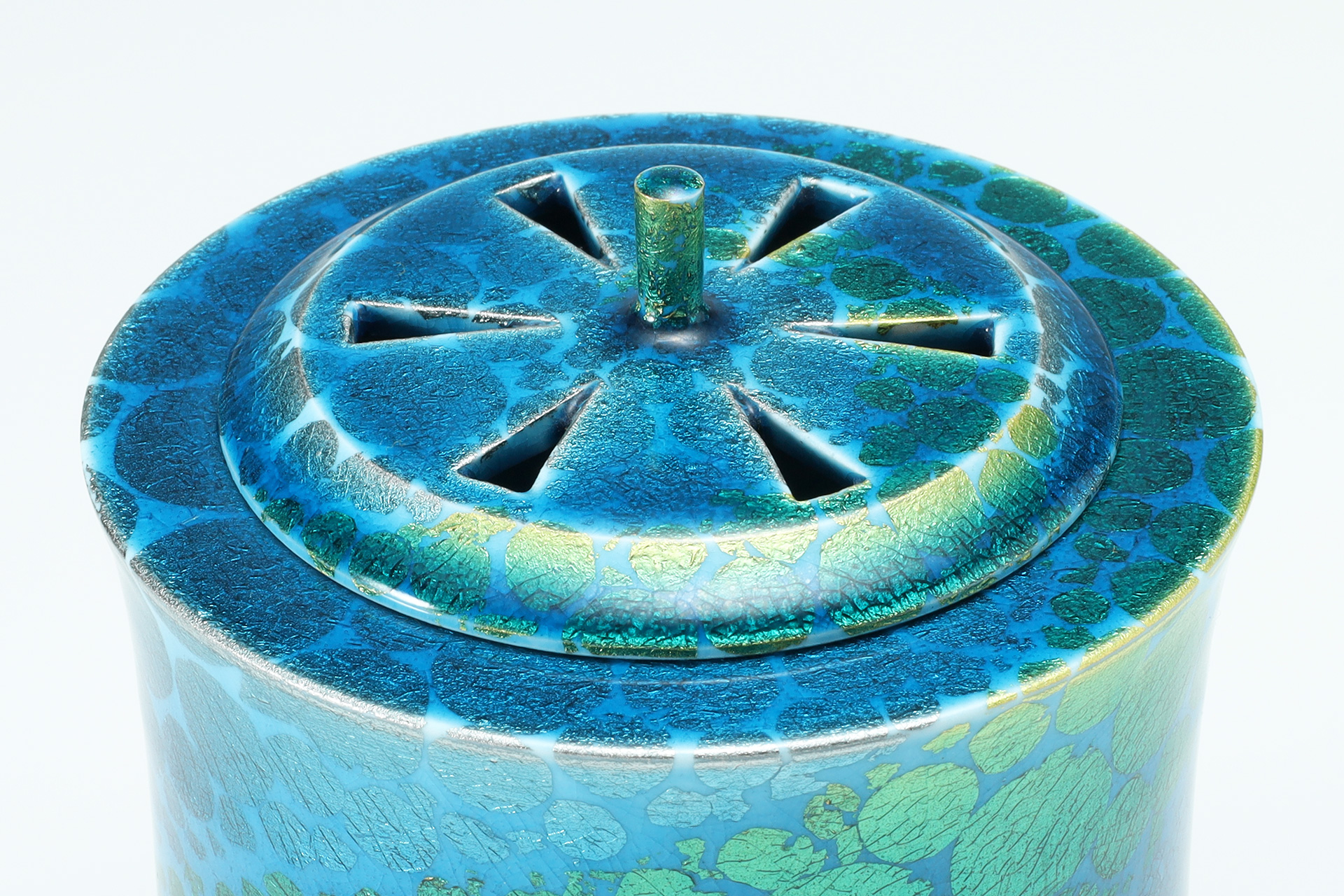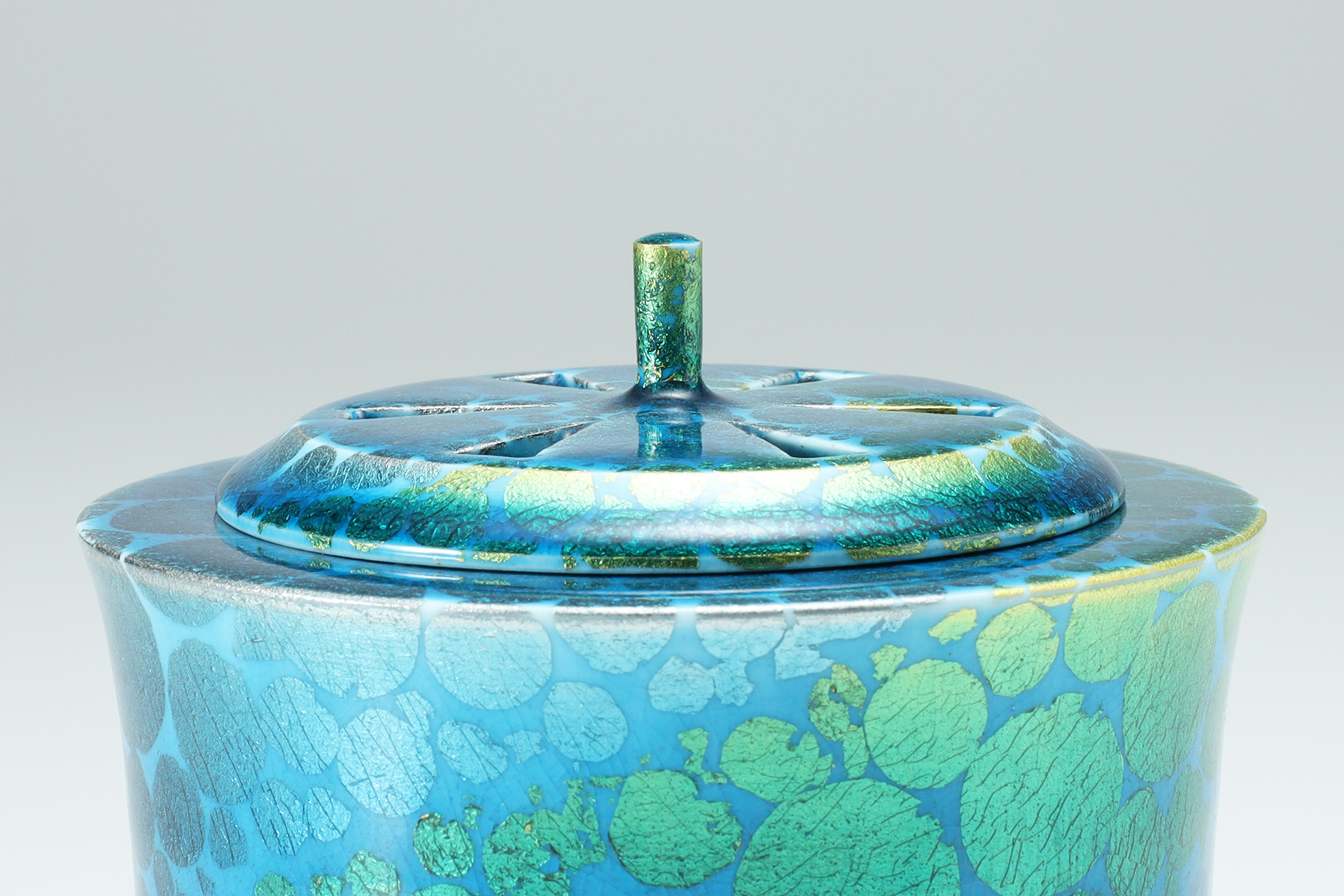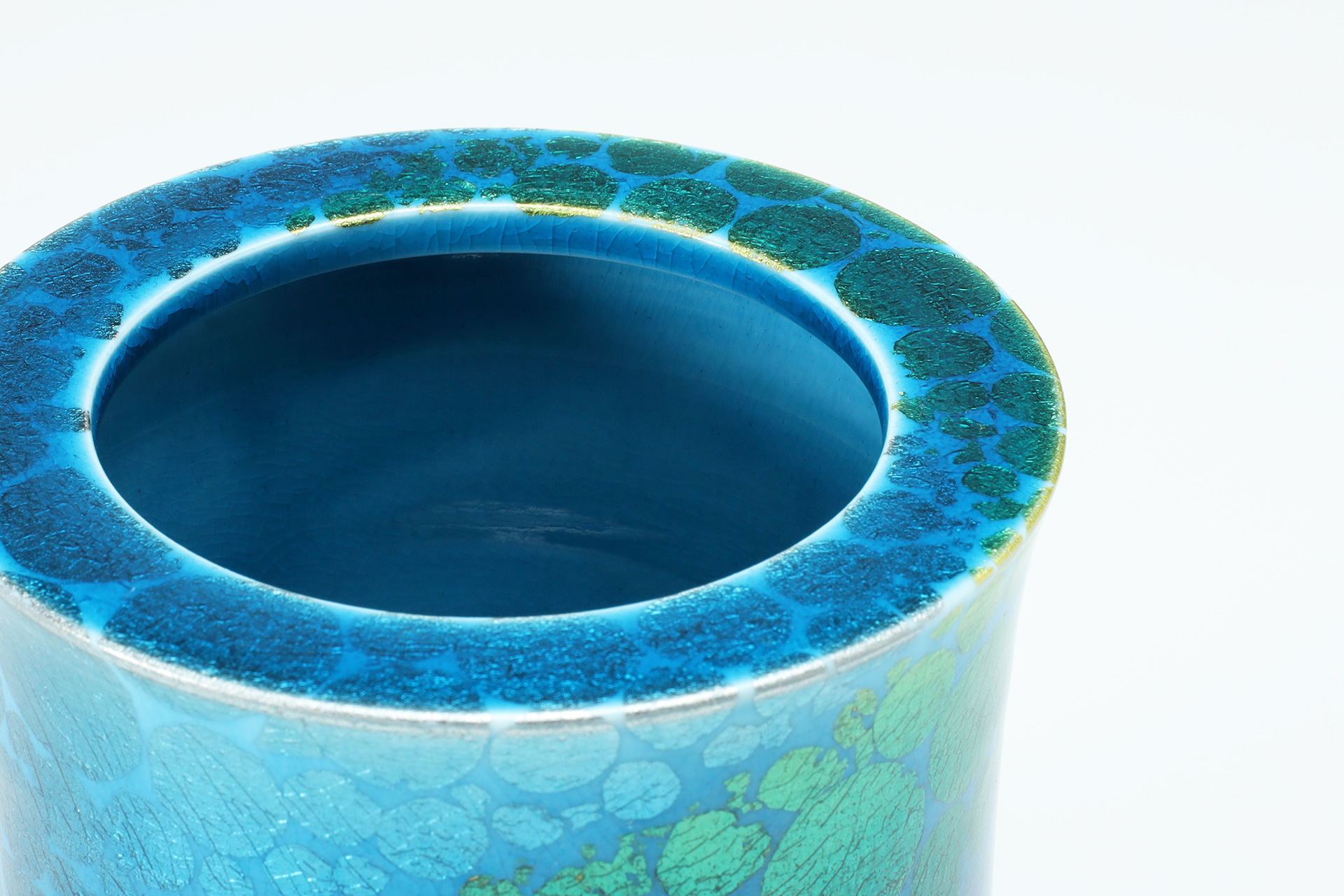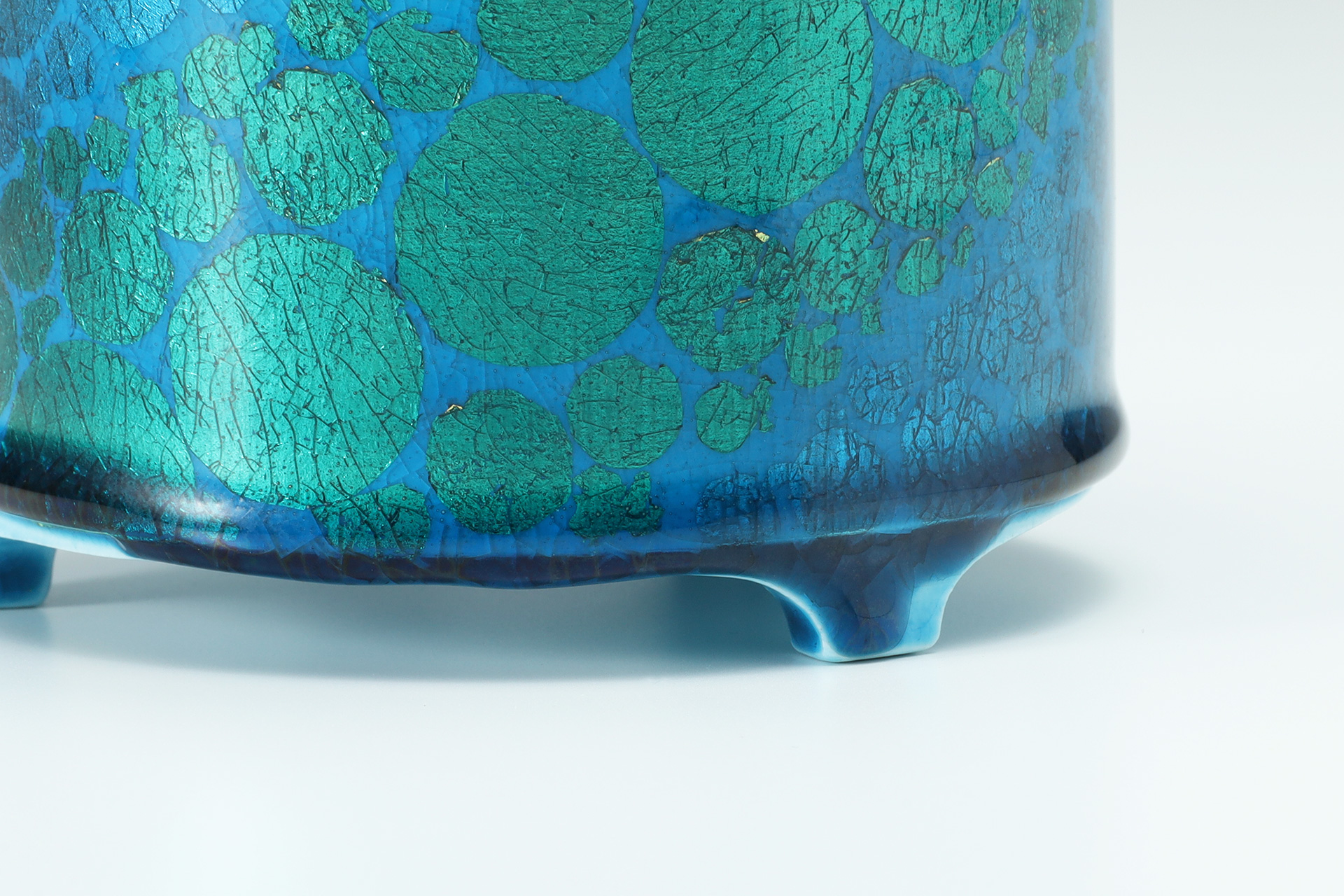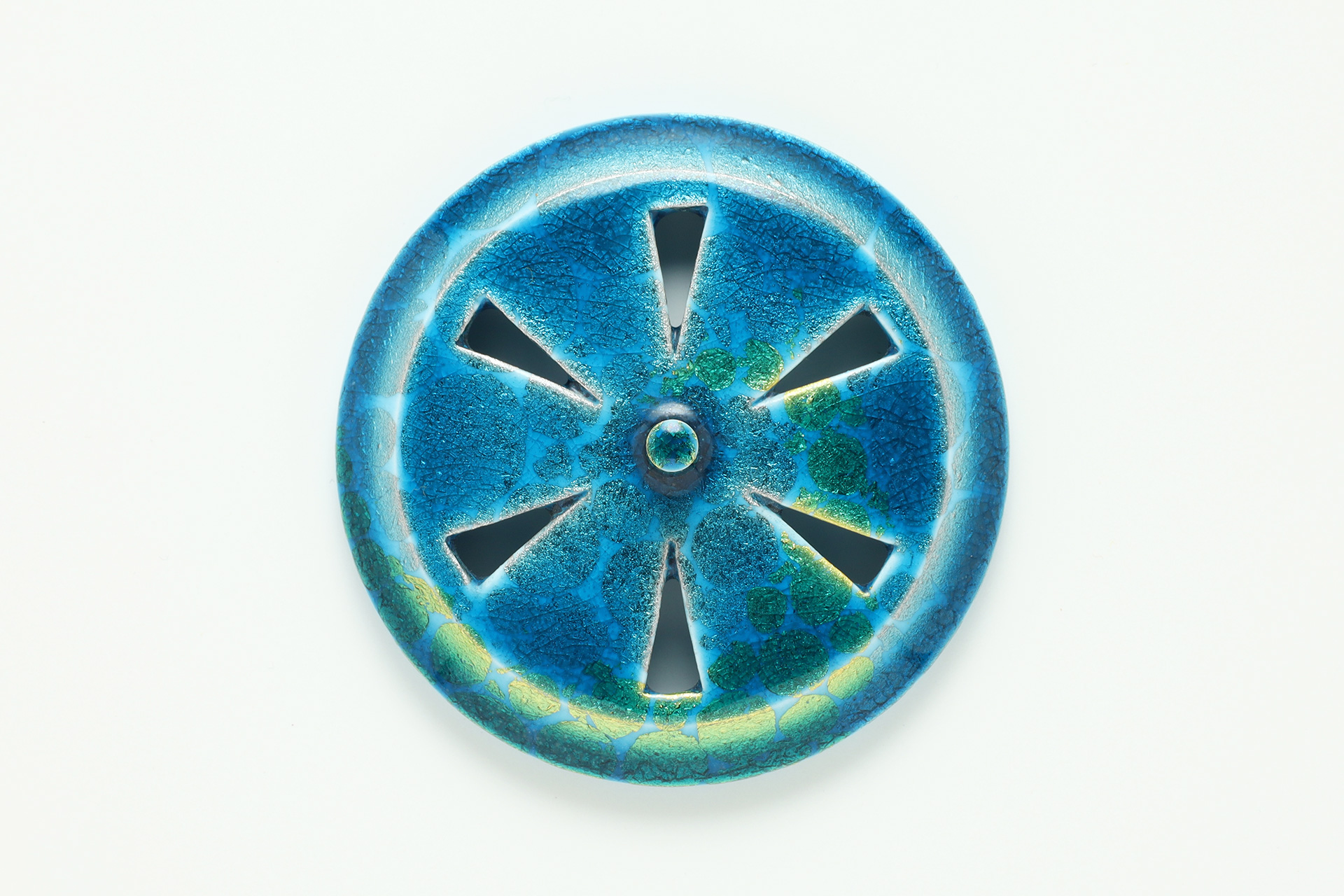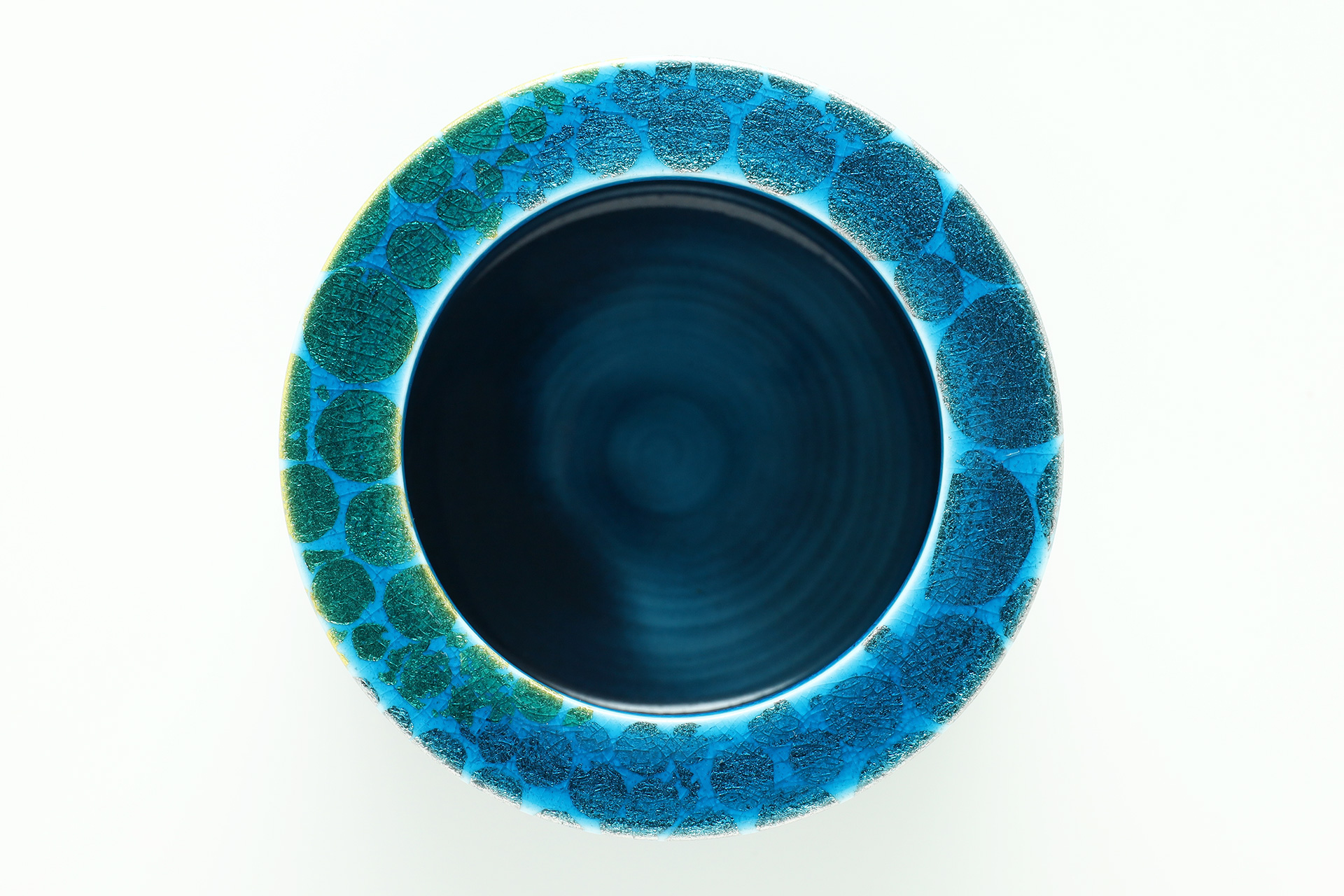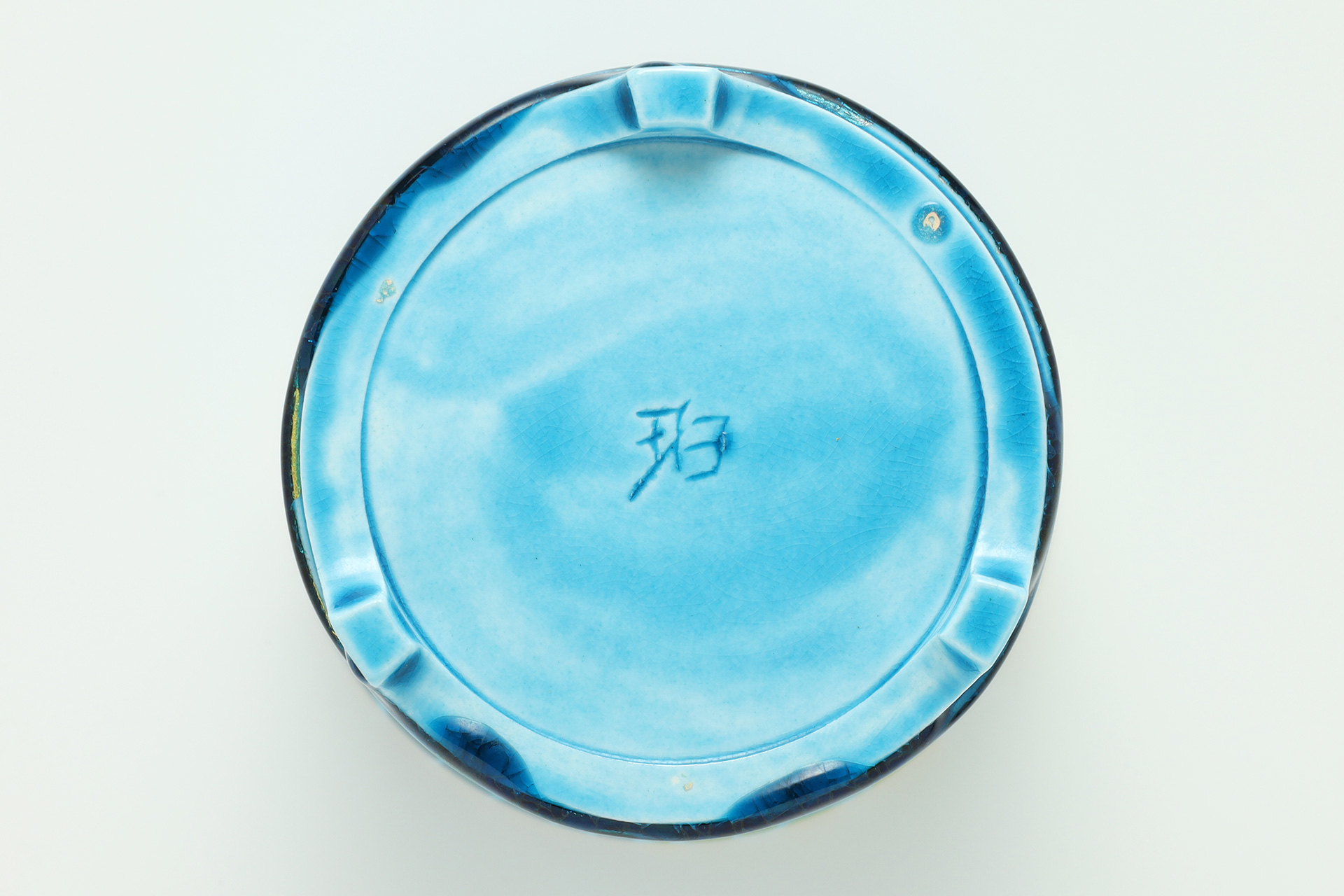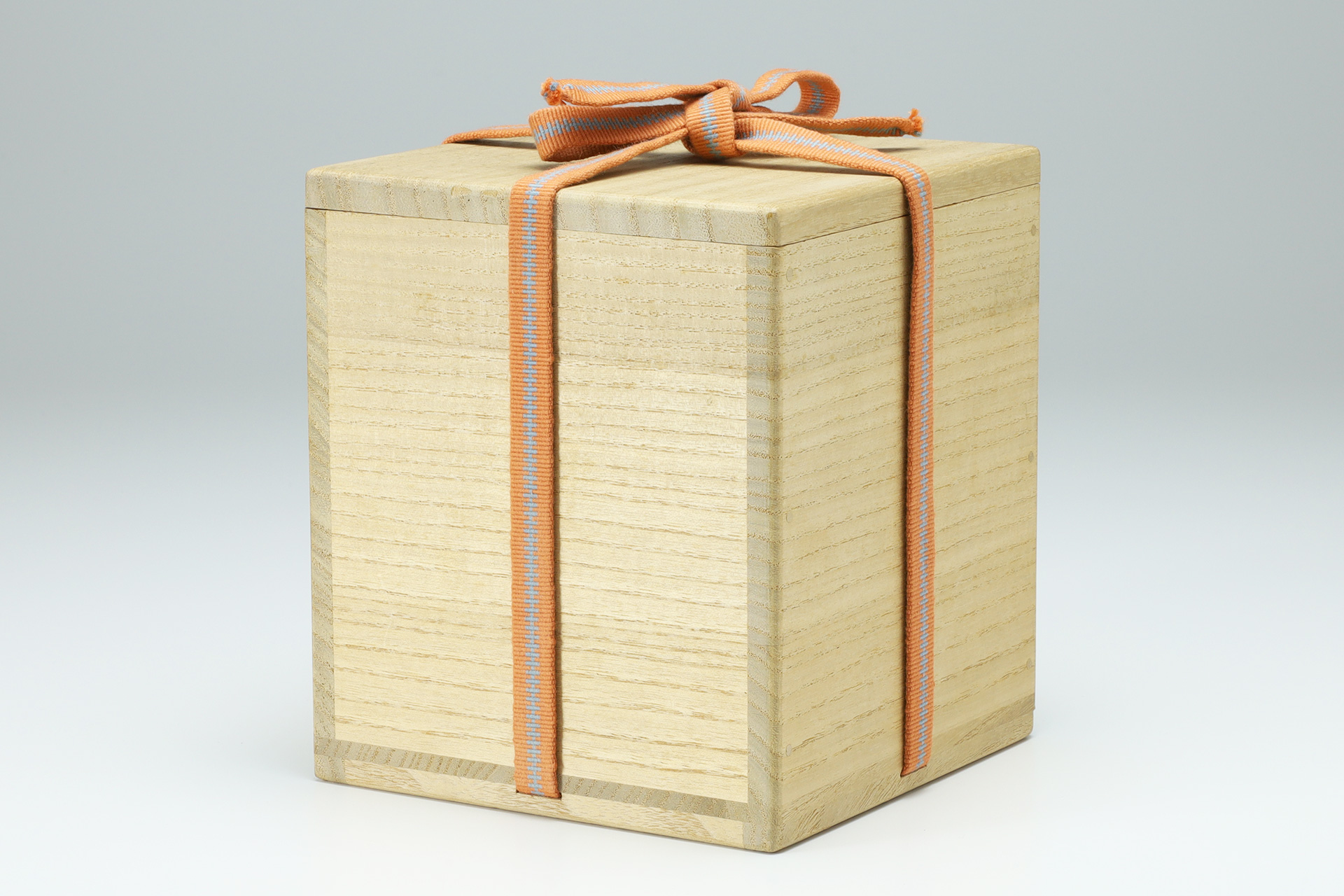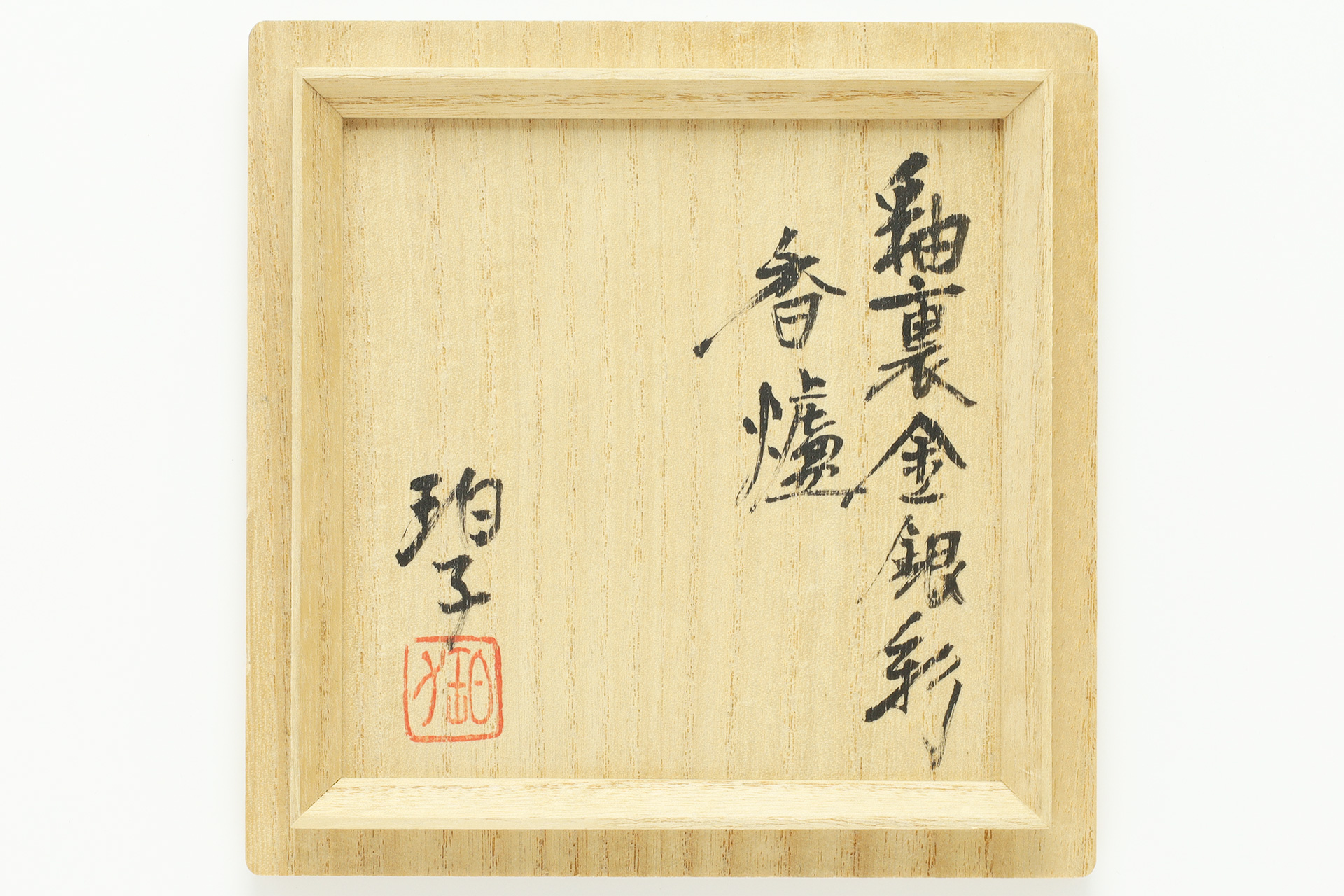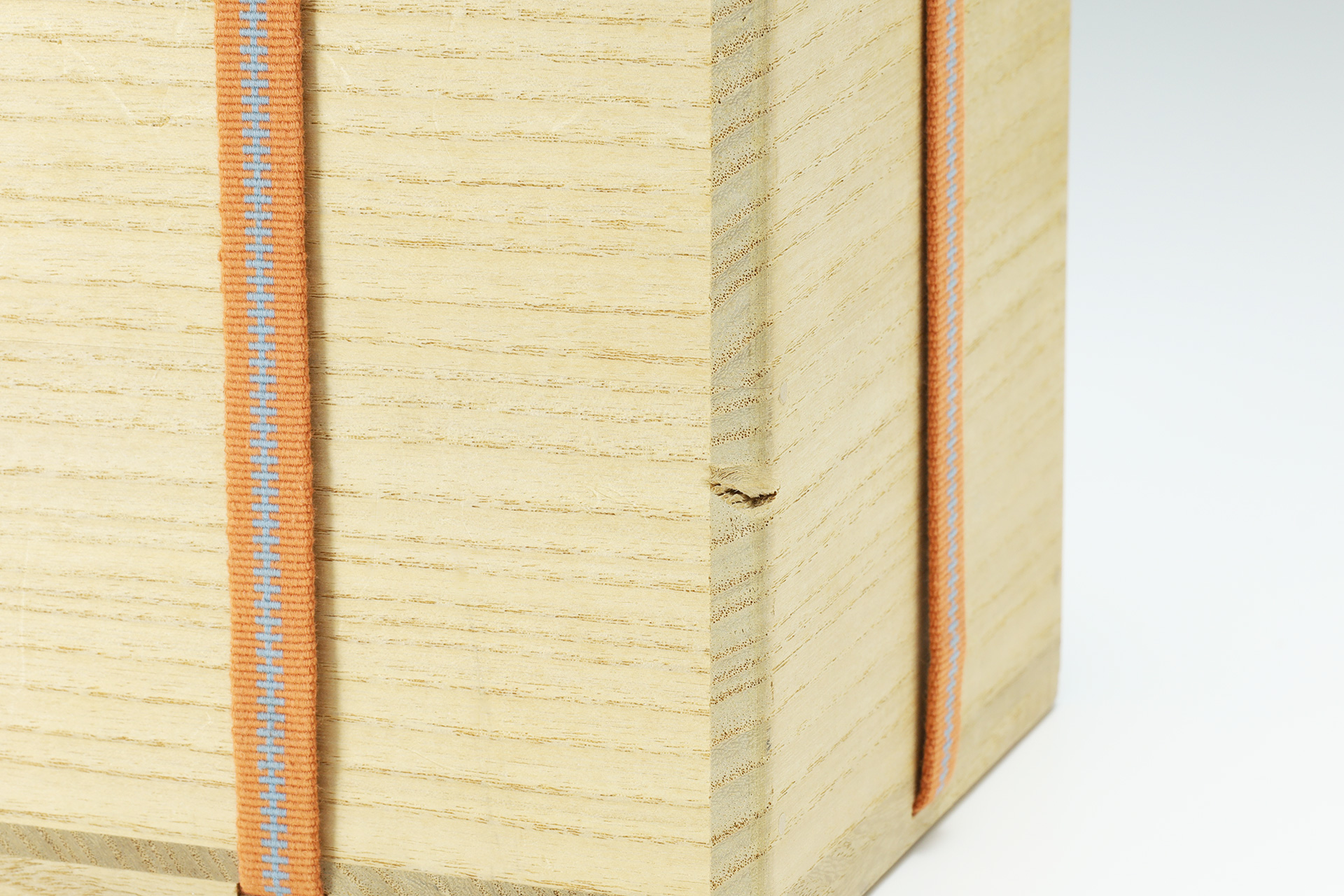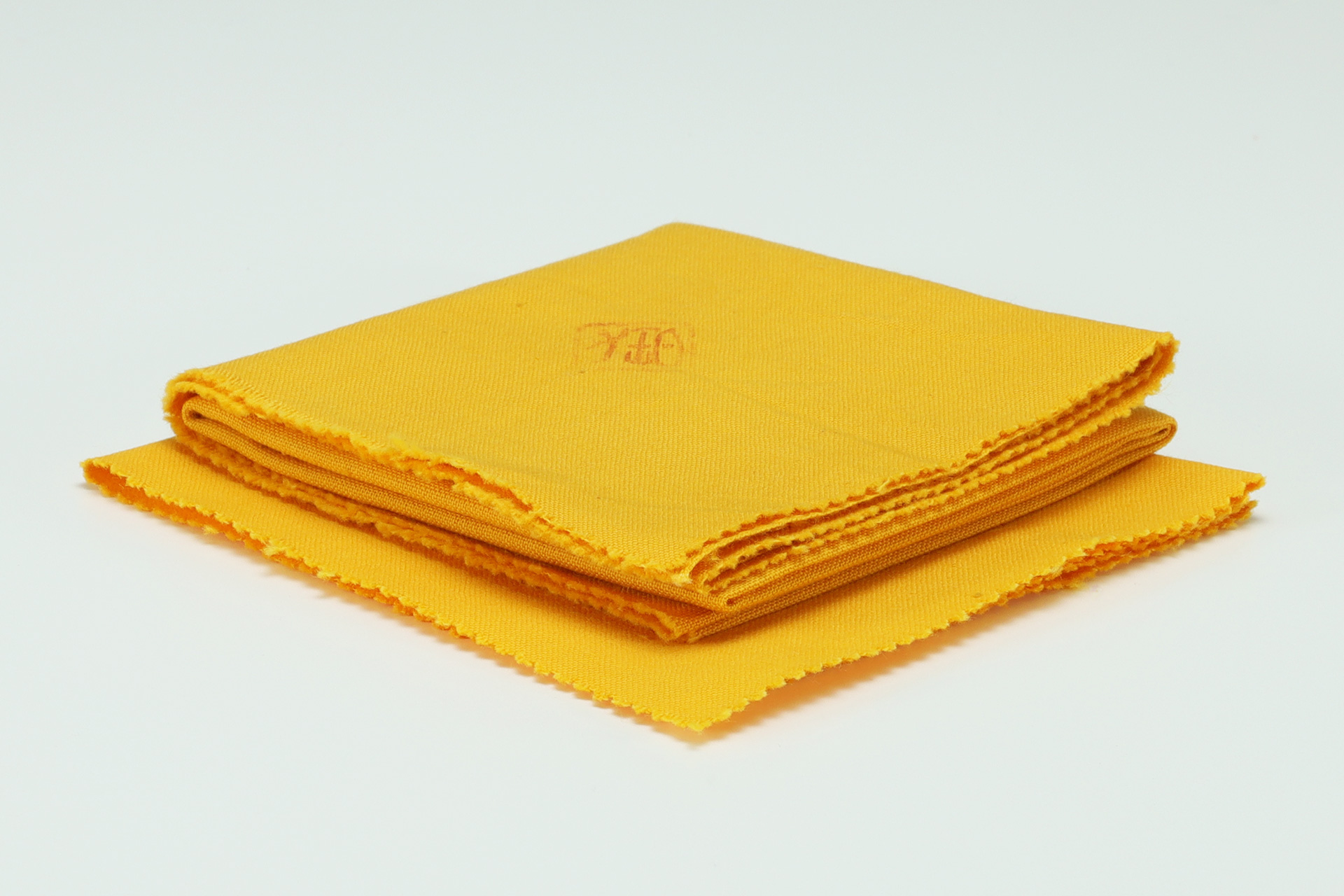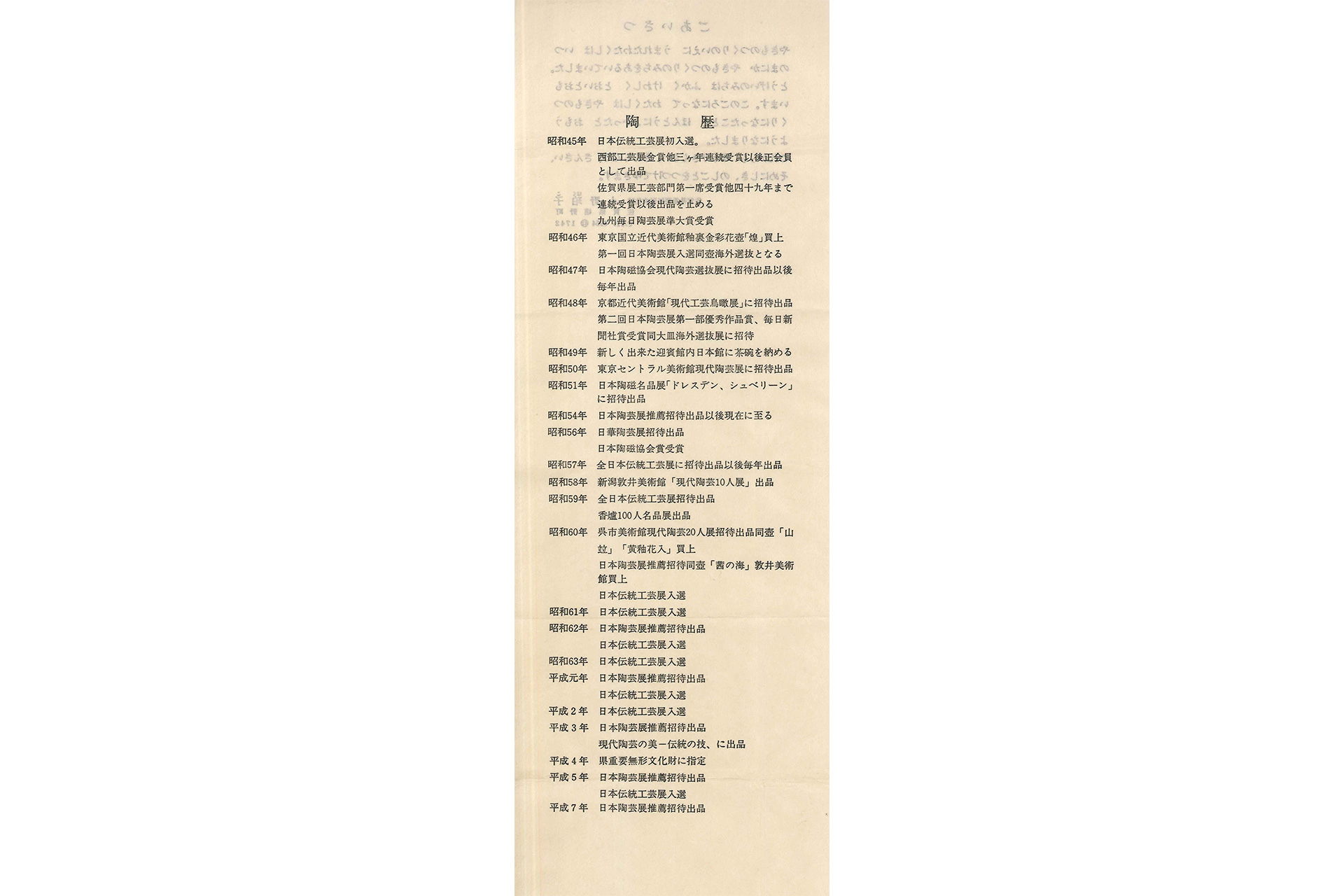This is the yuri-kinginsai from her later years, using both gold leaf and platinum leaf. The sophisticated design creates a splendid and fantastic highlight. Hakuko Ono sought the sparkle of gold not just as it is, but under the glaze that shines faintly, and became famous as a leading expert in yuri-kinsai. Yuri-kinsai takes a lot of effort and time, and since it cannot be mass produced, there are few artists who work on it, and above all, it requires a high level of technical ability.
Inquiry
- Product Code
- 240301-2
- Artist
- Hakuko Ono
1925-1996
Saga Prefecture Important Intangible Cultural Property
- Weight
- 379g
- Diameter
- 9.2cm
- Top Diameter
- 6.4cm
- Height
- 11.1cm
- Description
- Paulonia Box with Artist's Sign
Cloth with Artist's Sign
Record of the Artist
- Condition
- Excellent Condition
It is in good condition.
Yuri-kinsai was first introduced by kutani ware artist Aritsune Takeda at the japan traditional craft exhibition in 1961, and is made by firing gold leaf onto a pottery base and glazing it. Hajime Kato was impressed by this technique and tried it out, exhibiting it at the japanese traditional craft exhibition in 1962 under the name “Yuri-Kinsai”. In 1964, Hakuko Ono was fascinated by Hajime Kato’s yuri-kinsai, and further developed the possibilities of the material called gold.
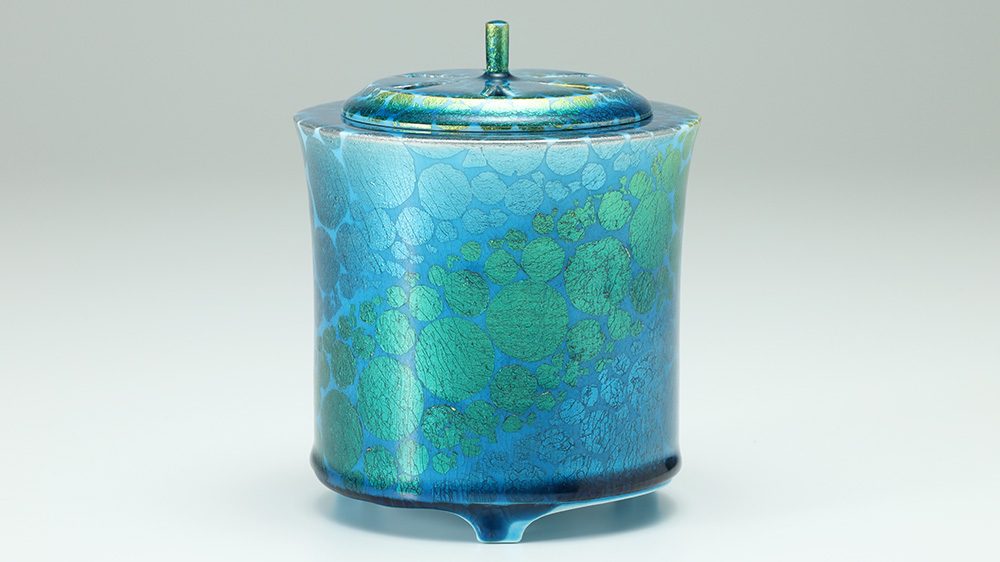
The clay is a mixture of amakusa pottery stone and karatsu clay in a ratio of approximately 3:1, and is then dried, bisque fired, and fired.
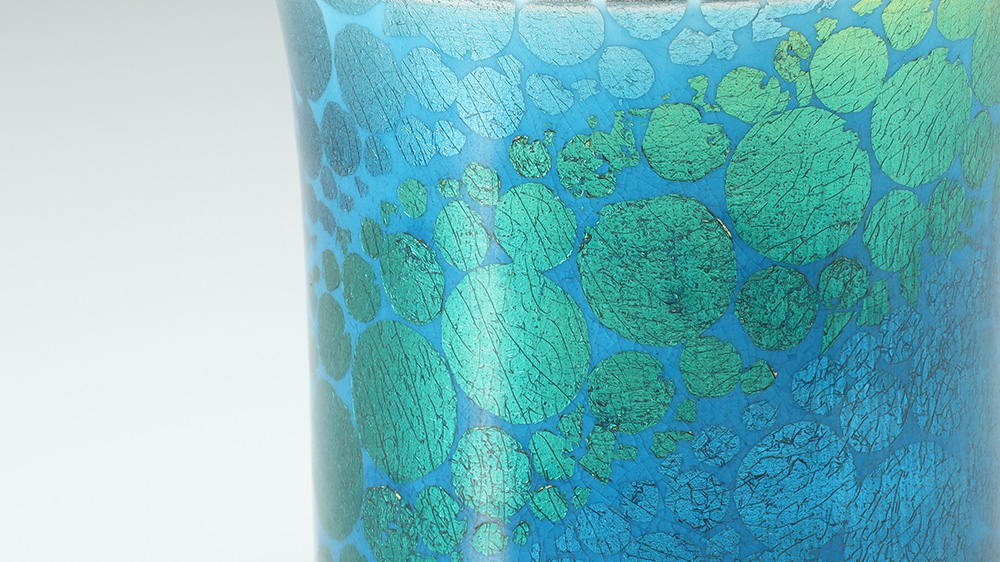
After applying a base glaze and firing at a low temperature, the entire surface is coated with lacquer, and in about three weeks it is in its best condition, ready for gold leaf to be applied. Lacquer is sensitive to the weather, so it dries in about a week in the humid summer. There is a grace period of about 8 to 12 hours during which gold leaf can be applied, but in hot and humid weather it will no longer be possible to apply gold leaf within 4 to 5 hours, so applying gold leaf is a race against time.
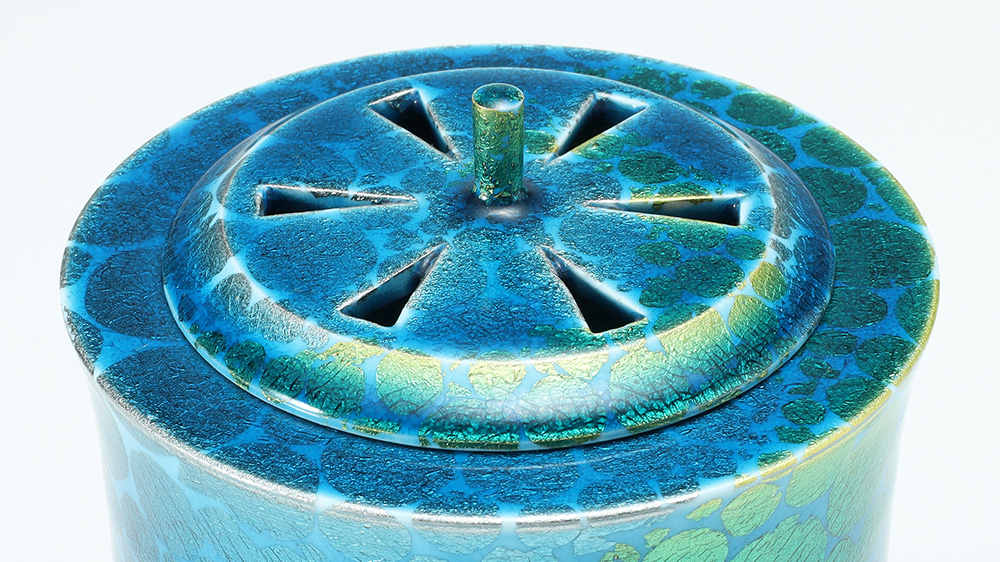
After checking how dry it is, use bamboo tweezers to apply thick gold leaf(gold leaf specially ordered in kyoto). Because yuri-kinsai is decorative porcelain, it must be gorgeous and dignified.
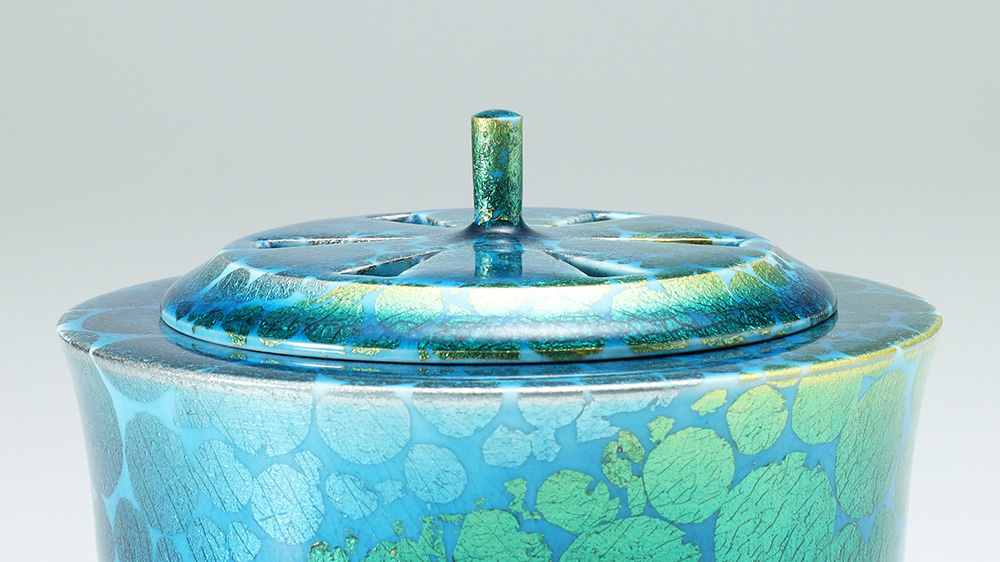
Gold leaf is fired on the surface at a low temperature, a highly transparent glaze is applied thinly, and the glaze is fired at a low temperature. The glaze is further coated and fired at a low temperature. The gold leaf has a calm texture by repeating firing approximately 6 times starting from the unglazed firing.
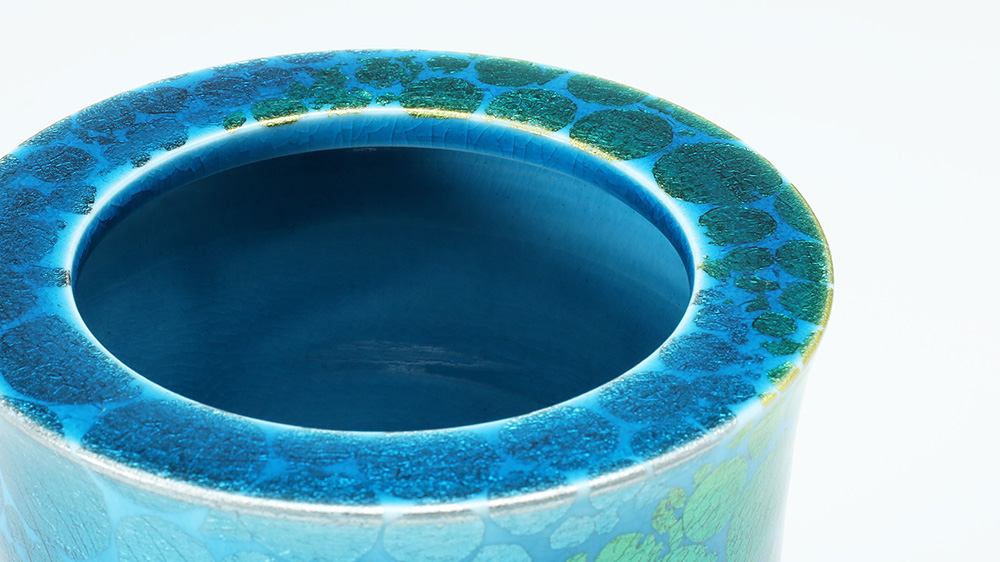
Yuri-kinsai is not only durable in that it prevents the gold from peeling off, but the strong metallic shine is suppressed by passing it through a glassy coating, giving it a mysterious and elegant sparkle.
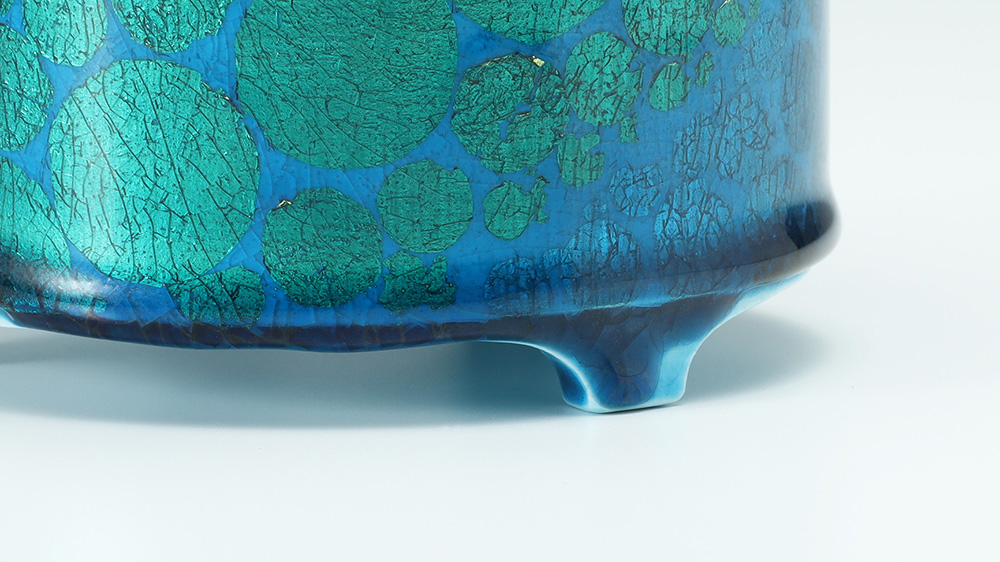
At first, she had many failures such as the gold leaf peeling off, but she gradually mastered the technique and her works are now included in museum collections both in japan and abroad.
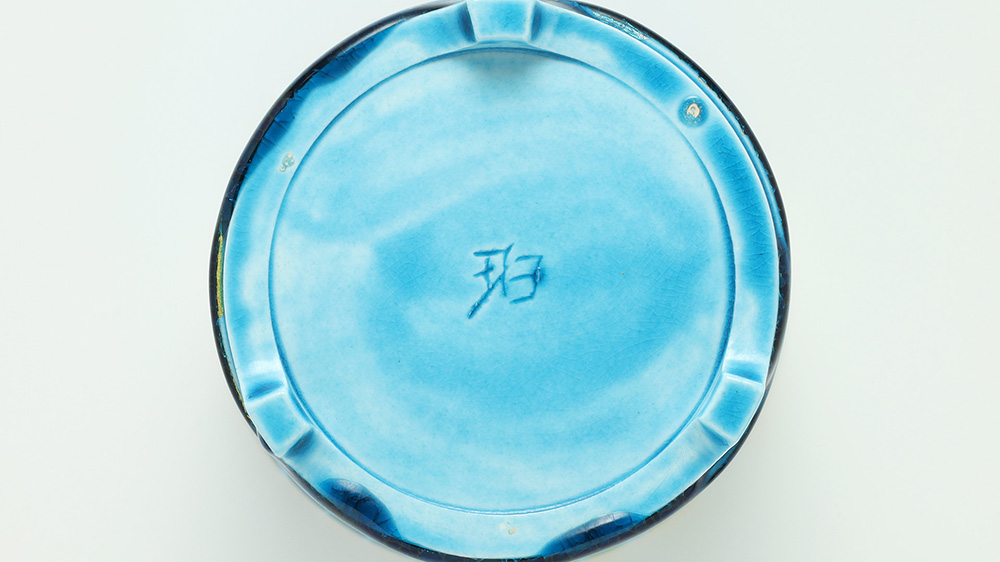
Hakuko Ono 1925-1996
Hakuko Ono was born in aichi prefecture as the eldest daughter of Kozan Ono.
In 1931, father resigned from job at the nagoya ceramic works, established the “Kozan Ceramic Works” in fukushima prefecture, and moved the family there. Coupled with the recession, father’s business was extremely difficult, but in 1939 he relocated the small scale kozan ceramic works to ureshino city, saga prefecture. Only hakuko remained in fukushima prefecture and was left with her uncle until she graduated from a girls’ school.
In 1943, after graduating from Aizu Wakamatsu Girls’ High School, returned to ureshino and worked in the family business. At that time, the kozan ceramic works was booming as wholesalers in arita began to actively purchase it.
In 1948, married into the Ogushi family in tokyo, but divorced in 1960 and returned to ureshino to work in her father’s kozan ceramic design office.
In 1964, fascinated by Hajime Kato’s yuri-kinsai technique and began researching the technique on own, but failed for several years.
In 1969, developed the yuri-kinsai.
In 1970, received the Award at the Kyushu Yamaguchi Ceramic Exhibition. Received the Gold Award at the Japan Kogei Association West Craft Exhibition. Received the Award at the Saga Prefecture Exhibition Craft Division. Received the Second Prize at the Kyushu Mainichi Ceramic Exhibition. Received the Governor Award at the Saga Art Association Exhibition.
In 1971, received the Asahi Gold Award at the Japan Kogei Association West Craft Exhibition, the yuri-kinsai jar “Kou” was collected at the National Museum of Modern Art, Tokyo. Received the Nihon Keizai Shimbun Award at the Saga Prefecture Exhibition.
In 1972, received the Nagasaki Broadcasting Director Award. Received the Tamaya Award at the Japan Kogei Association West Craft Exhibition.
In 1973, received the Excellent Work Award at the Japanese Ceramic Art Exhibition. Received the Mainichi Shimbun Award. Became the Regular Members of the Japan Kogei Association.
In 1974, the tea bowl was collected at the Japanese Pavilion in the State Guest House.
In 1981, received the Japan Ceramics Society Award, the Cultural Encouragement Award. The work was collected at the Sydney Art Museum in New Zealand.
In 1985, “Yamanami”, “Yellow glaze Vase” was collected at the KURE MUNICIPAL MUSEUM OF ART. “Sea of Madder” was collected at the TSURUI MUSEUM OF ART.
In 1986, the work was collected at the Ministry of Foreign Affairs.
In 1988, the work was collected at the Museo Nacional de Bellas Artes and the Ministry of Foreign Affairs.
In 1992, designated as the Saga Prefecture Important Intangible Cultural Property.
She is one of japan’s leading female artists, specializing in kinrande and yuri-kinsai, which use gold leaf boldly and delicately, and has developed a luxurious and profound worldview that combines her gorgeous techniques with modern sensibilities. Yuri-kinsai takes a lot of effort and time, and since it cannot be mass produced, there are few artists who work on it, and above all, it requires a high level of technical ability.



